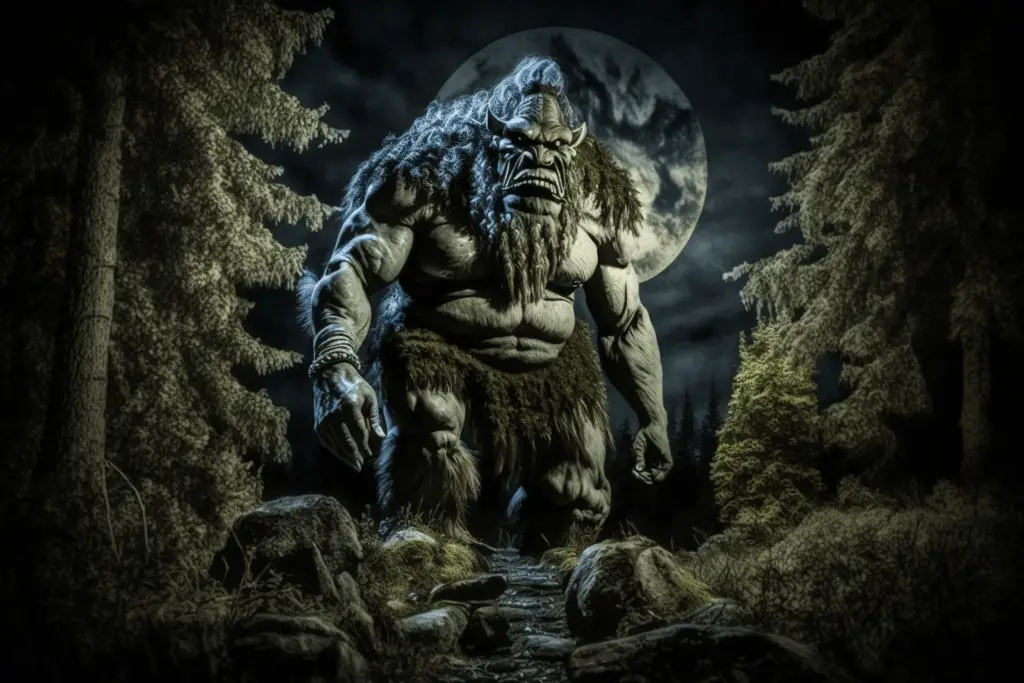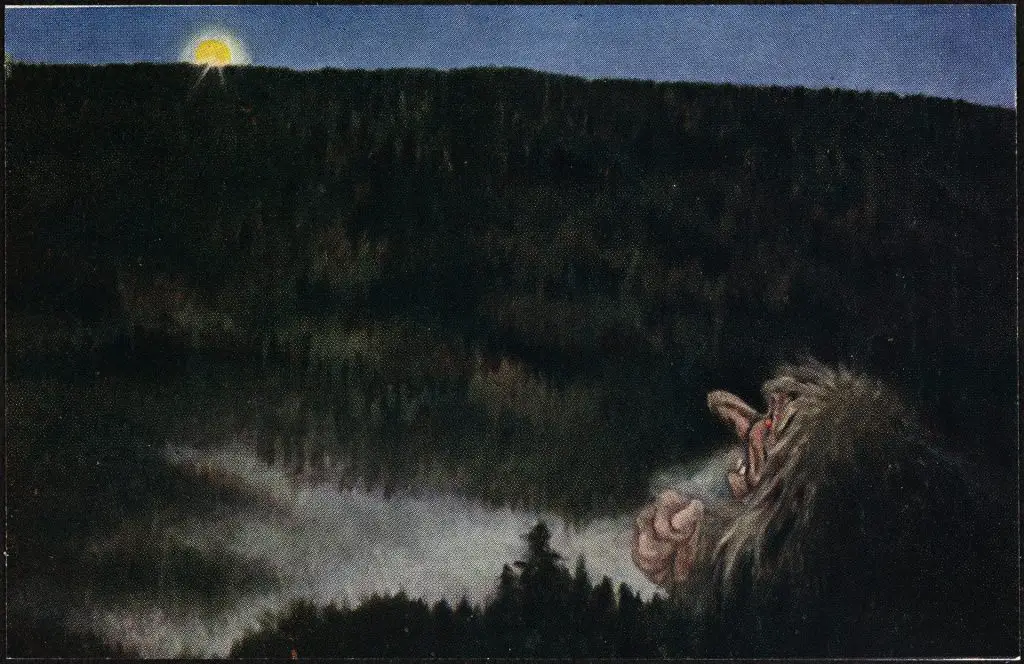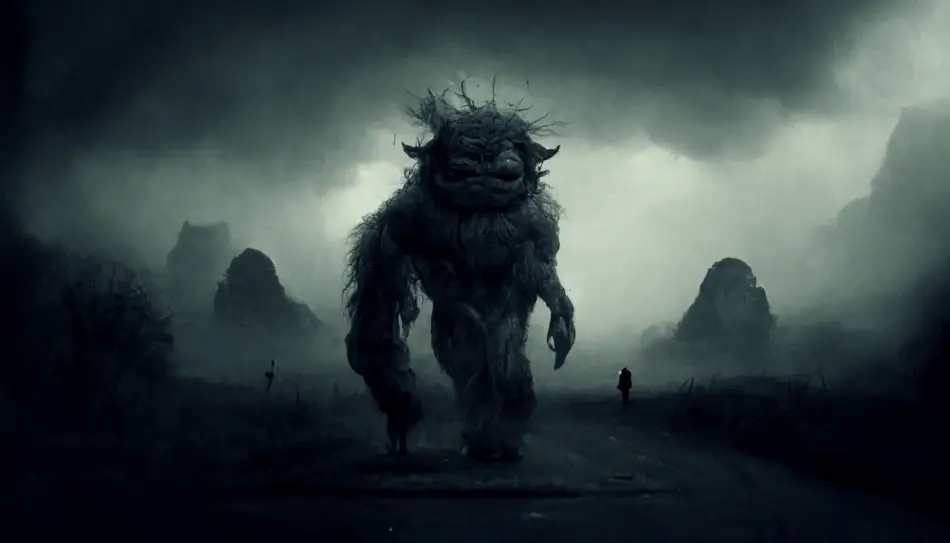Share the Lore!
By: Jordan Joly
Norwegian Trolls – Fact or Fiction?
Trolls are the most recognizable Norwegian creatures that are, to this day, still being portrayed in popular culture regularly.
Nowadays, a troll is typically associated with either a person who intentionally says something to provoke other people online or a loveable cartoon aimed at entertaining children with glitter and rocking pop music; either way, we all know trolls.
Or do we?
We’ve seen them trying to cook Hobbits in the Lord of the Rings, wandering the school campus of the wizarding world, and we’ve even watched them help Queen Elsa in Frozen.
Each portrayal being slightly different from the last.
However, the origin of the troll is a lot older and more ominous than one might think, a true testament to human imagination and the power of folklore.
The Origin of Trolls
As Norse Mythology mainly was handed down verbally, it can be difficult to get a real handle on what is what. With the origin of trolls being dated back to as early as the 9th century, many textual pieces have been lost or rewritten into more modernized fables.
In Old Norse sources, a troll is a mythical creature of Scandinavian origin.
Being one of the most anthropomorphic fantasy beasts, they are commonly described as anti-social, night-dwelling creatures living in the seclusion of mountainsides or thick forests. Each species shares the same characteristic of possessing magic and a hatred of men.
Some legends have also reported that trolls turn to stone or shatter when placed in direct sunlight. With longer days of summer in Norway, it makes sense that trolls were often portrayed as dark beings who appear only in the dead of winter.
Though their true existence is debatable, oral tales concerning trolls no doubt served as warning fables. It prevented many children from wandering too far and instilled fear and respect for mother nature’s extreme powers.
A practice seemingly used in my own home, as my mother often depicted trolls as giant, ill-natured creatures that would climb into windows in the night to munch on the flesh of misbehaving children.
I quickly became accustomed to eating my vegetables. And locking my window before bed! Similar to children of the past.

Types of Trolls in Mythology
Because of such an early lineage, several species of trolls vary in sizes and appearances around the globe; below are the most common to look out for from Norse Mythology:
Jötnar
In Nordic myth, these massive brutes are known for being ugly, often found to have tusks or only one eye. Residing in the mountains, they can reach up to 200 feet tall! Said to be much stronger than humans, Jötnar are told to be very dangerous and evil.
Hulderfolk
Known for having features similar to humans, Hulderfolk are usually blond and handsome, set apart by their long cow-like tails; they reflect the nature and landscape in each country they reside in. One of the most disturbing aspects of Huldrefolk behavior is the snatching of children, young women, and older people with no reasoning.
The Troblin
Less prevalent in sagas, these trolls still tend to appear in Scandinavian folktales. As opposed to larger scaled Hulderfolk, this type is small and robust.
A very troublesome spirit, known for having a much better dialect, personalities, and backstories, Troblins are apparently social amongst each other, forming relationships and families in hidden communities far from the human eye.
Despite their isolation, they are known for causing problems on Christmas eve. Coming into town to break into empty human houses to throw parties.
Forest Troll
Known in the media as the trolls whose riddle you need to solve or character you play in an RPG! These trolls are generally depicted as large, slow-moving, and dumb, with brutish qualities similar to Neanderthals.
It is said Forest Trolls can use their connection with nature to uproot trees to use as weapons and have the ability to cause avalanches or hurricanes.

Is The Truth Hiding on Reddit or are Trolls a Fairytale ?
If you ever spent even a few minutes on the popular platform, it’s understood how easily you can fall down a rabbit hole.
Looking for answers, I dove in headfirst, trying to find more about Trolls and their existence.
This is what I found:
Encounters:
The site did not let me down in the fact that it was rich with personal encounters with trolls from Reddit users around the world looking to share their stories, make-believe or not.
Some writers experienced similar phenomena such as missing items, pets becoming frightened or watchful in certain areas, hearing singing in the mountains, and much more.
Every encounter was unique and quite detailed, bringing life back into the what if? Making you wonder about their true existence.
Spells and Runes:
Reddit was full of spells that were created to witness Trolls or harness the power of the occult.
Troll lore surprisingly is filled with protective runes and summoning spells similar to those found in witchcraft practices.
Though there are no accounts of success, it clarifies how deep these stories run in Nordic culture and their importance to certain individuals.
Though I couldn’t find a solid answer, new respect was found for folklore, and the role Trolls play in Nordic teachings.
So, Are Trolls Real?
Trolls are real in the same way the Loch Ness monster and Bigfoot are real. Though they have been around for centuries, there is no scientific evidence or solid proof that they exist at this current time.
But that doesn’t mean they aren’t out there. The people of Denmark and Scandanavia have claimed for centuries have had encounters.
Be that it may, it is possible that early man had some knowledge of Neanderthals and incorporated them into myth; there’s no doubt the long and rich history tied to the region helped trolls remain such eminent figures in Norwegian Culture to this day.
Fairy tales may not be a reality, but they spark some magic in the stories we tell and the memories we share with loved ones, which is one of the reasons why we love them.
This means it is up to you to decide whether they exist or not and whether you should be locking your windows at night.

